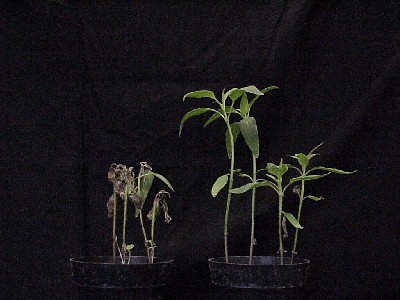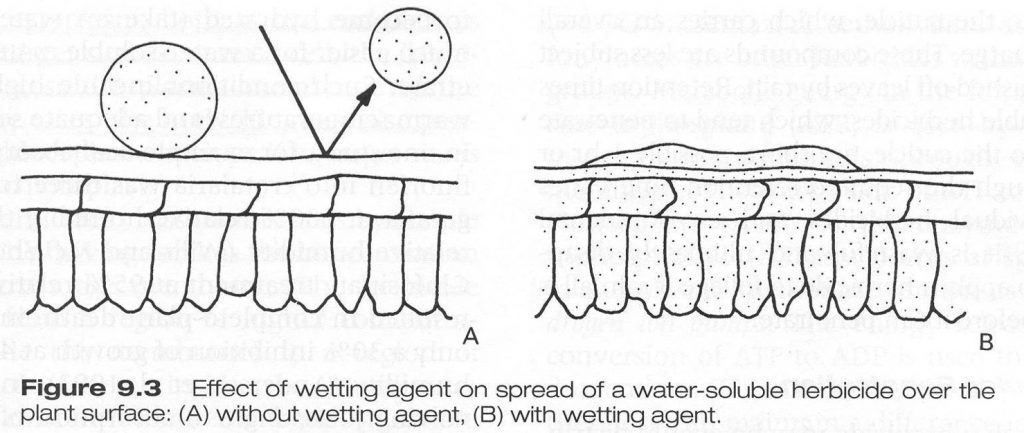Chapter 14: Applied Herbicide Physiology and Movement
14.10 Overcoming Cuticle Barriers to Improve Absorption

Because the waxy cuticle on the leaf surface is a barrier to absorption of foliar applied herbicides, surfactants or oils are often added to the spray mixture to improve absorption and herbicide effectiveness. Herbicide mixtures applied in water do not readily ‘wet’ the waxy foliage because the high surface tension of water causes spray droplets to remain as droplets on the leaf surface. Surfactants reduce the surface tension of aqueous mixtures resulting in spray droplets spreading as a thin film on the leaf surface thereby increasing the area of contact between the herbicide and the leaf and resulting in greater herbicide absorption into the plant. The use of oil additives with aqueous mixtures of herbicides also results in the spray mixture spreading on the leaf in a thin film increasing the area of contact. Therefore, both oil additives and surfactants can act as solvents for the waxy cuticle and aqueous spray mixture resulting in improved cuticle absorption of the herbicide. Under conditions of a well developed cuticle, oils are often more effective than surfactants in increasing herbicide effectiveness (Figure 12).
This drawing illustrates how adding a surfactant can help increase herbicide absorption into the plant’s leaves, by reducing the surface tension between the herbicide droplet and the plant cuticle layer. (Clicking on the drawing will bring up a larger image to view.)

Review and Reflection